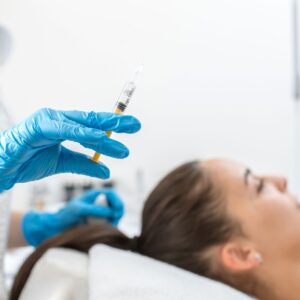Understanding Varicose Veins
Varicose veins are enlarged, twisted veins that typically develop in the legs and feet. They result from weakened or damaged valves in the veins, which allow blood to pool instead of flowing smoothly back to the heart. Over time, this leads to vein distension and visible changes under the skin. For those seeking effective solutions, Varicose Veins Treatment in Abu Dhabi offers modern approaches to manage the condition, improve circulation, and restore confidence.
While often seen as a cosmetic concern, varicose veins can lead to symptoms such as heaviness, aching, and swelling in the legs. In some cases, if left untreated, they may cause skin discoloration and complications related to circulation. This makes seeking timely treatment essential—not just for appearance, but for comfort and long-term vein health.
Why Abu Dhabi Is a Hub for Advanced Vein Treatments
Abu Dhabi offers a modern healthcare infrastructure equipped with advanced technology and skilled specialists trained in the latest minimally invasive vein treatments. As awareness grows around vascular health, more residents are taking action to address symptoms early, and new innovations continue to improve outcomes and recovery times.
Patients in Abu Dhabi benefit from personalized evaluations, including diagnostic imaging and vein mapping, which help specialists recommend the most appropriate procedure based on the individual’s vein condition and overall health.
Advanced Solutions Available in Abu Dhabi
Endovenous Laser Therapy (EVLT)
Endovenous Laser Therapy is a minimally invasive technique that uses laser energy to close off faulty veins from the inside. A thin fiber is inserted into the affected vein under ultrasound guidance. Once in place, laser heat is applied, causing the vein to collapse and seal shut. Over time, the vein is naturally absorbed by the body.
This procedure is well-suited for larger veins and has largely replaced more invasive surgical methods. Recovery is typically fast, and the treatment can often be completed within an hour.
Radiofrequency Ablation (RFA)
Radiofrequency Ablation is another highly effective, non-surgical treatment that uses radiofrequency energy rather than laser to heat and close the vein. A small catheter delivers energy directly to the vein wall, which causes it to contract and eventually disappear from circulation.
RFA is known for being gentle on surrounding tissues and causes minimal discomfort. Most individuals resume their daily routines within a day or two, with very little disruption.
Sclerotherapy
Sclerotherapy is often recommended for smaller varicose veins or spider veins. A special solution is injected into the vein, irritating the lining and causing it to seal shut. Over several weeks, the treated vein fades and is reabsorbed.
This procedure is simple, quick, and performed in an outpatient setting. It may require multiple sessions for best results, especially when treating clusters of smaller veins.
Foam Sclerotherapy
Foam Sclerotherapy is a variation of traditional sclerotherapy that uses a foamed version of the solution, allowing it to cover more surface area and displace blood within the vein. This ensures greater contact with the vein wall, making it especially effective for treating medium to large veins.
The foamed agent is visible via ultrasound, offering precision during the injection process. It is often chosen for veins that are not ideal candidates for thermal ablation.
Adhesive Vein Closure
Medical adhesive treatments involve sealing the vein using a special glue rather than heat or injections. A catheter delivers the adhesive to the vein, closing it almost instantly. This technique is often preferred for individuals who are not suitable for thermal-based procedures or wish to avoid post-procedure compression therapy.
The treatment is virtually painless, requires no tumescent anesthesia, and allows for immediate mobility after completion.
Ambulatory Phlebectomy
This minor surgical procedure is used to remove superficial varicose veins through small incisions in the skin. The procedure is done under local anesthesia and is ideal for veins that are too twisted or bulging to be treated effectively with internal closure techniques.
Ambulatory phlebectomy provides immediate visual improvement and is often combined with other vein treatments to ensure comprehensive care.
CLaCS Technique
Cryo-Laser and Cryo-Sclerotherapy (CLaCS) is a hybrid treatment that uses cooling, laser light, and sclerosing agents together to treat veins with precision. The procedure begins with skin cooling to minimize discomfort, followed by the application of laser pulses, and ends with the injection of a sclerosing solution.
CLaCS is guided by imaging tools such as augmented reality or vein viewers to improve accuracy. It is particularly useful for treating spider veins or small reticular veins.
Recovery and Aftercare
Most advanced treatments in Abu Dhabi are outpatient procedures, allowing patients to go home the same day. Recovery is generally quick, with many individuals returning to work or normal routines within 24 to 48 hours.
Compression stockings are commonly recommended following most procedures to aid healing, reduce swelling, and encourage blood flow. Patients are also advised to walk daily and avoid prolonged sitting or standing during early recovery.
Follow-up visits are usually scheduled to assess the success of the treatment and determine whether additional sessions are needed for optimal results.
Benefits of Minimally Invasive Vein Treatments
Minimally invasive options for treating varicose veins offer a variety of benefits compared to traditional surgical stripping. These advantages include:
-
Less pain and discomfort
-
Shorter recovery time
-
Reduced risk of complications
-
Minimal scarring or bruising
-
High success and satisfaction rates
By using advanced imaging and treatment techniques, modern procedures target the problem veins directly while preserving surrounding healthy tissues.
Frequently Asked Questions (FAQs)
What causes varicose veins?
Varicose veins can develop due to genetic factors, prolonged standing, pregnancy, obesity, and age-related weakening of the vein walls and valves. Lifestyle habits and occupation also play a role.
Are these treatments permanent?
Most treatments effectively eliminate the treated veins. However, new varicose veins may appear in other areas if underlying risk factors remain unaddressed. Ongoing lifestyle management is key to prevention.
Will I need more than one treatment?
In many cases, a single session is sufficient. However, multiple treatments may be required depending on the number and size of veins, or if new veins appear over time.
Can I resume physical activity quickly?
Yes, most procedures allow for a fast return to light activity. Walking is encouraged, but strenuous exercise may be postponed for a few days.
Are these procedures painful?
Modern techniques are designed to minimize discomfort. Most individuals report only mild sensations, and local anesthesia is used for added comfort.
Is downtime required after the treatment?
Minimal downtime is one of the key benefits. Most people return to work and daily life quickly, often the same day or the next.
Final Thoughts
Varicose vein treatments in Abu Dhabi have evolved dramatically in recent years, offering safe, effective, and minimally invasive solutions for people seeking relief. Whether you’re dealing with visible veins, discomfort, or related symptoms, a tailored treatment plan can significantly improve your vascular health and confidence.
Read more: Varicose Veins Treatment in Abu Dhabi Restore Beauty and Health




